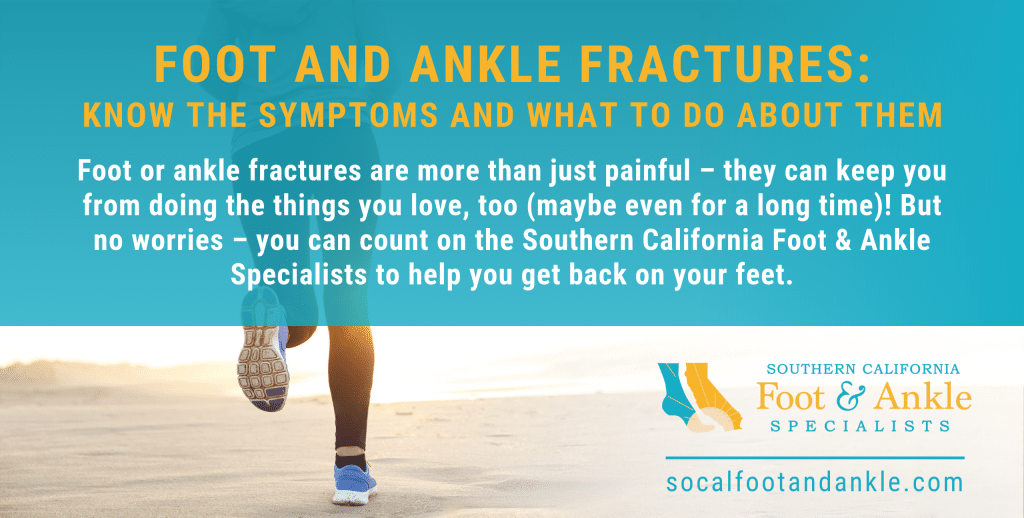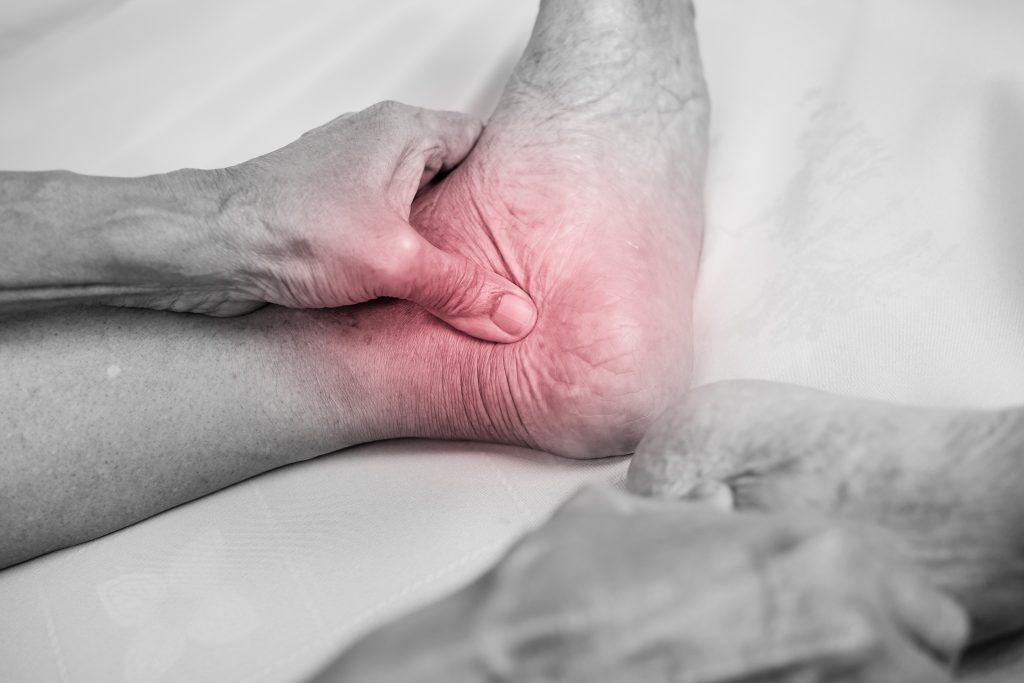Foot and Ankle Fractures: Know the Symptoms and What to Do About Them
Did you know that your feet endure force impacts of nearly four times your body weight when you run? It’s true! This number can be even higher if you are participating in sports activities that involve a lot of jumping (yeah, we’re talking about all you “hoopers” out there). That’s a lot of strain!
If you are an avid runner or have been sweating it out for the soccer team for a while now, these accumulated forces will naturally begin to take their toll on your feet and ankles, putting you at a higher risk for painful injuries. Anything from ingrown toenails to ankle sprains can happen, including fractures (broken bones) that can easily keep you sidelined for the rest of the season.
Now, we’re not saying that you should avoid being active. Exercising is a vital part of living a healthy lifestyle, and the benefits of doing so definitely outweigh the risks of getting injured. Keeping your body moving will help you ward off chronic disease and even boost your overall mood.
But this doesn’t mean you should simply sit back and wait for something to happen either!
There are plenty of measures you can take in order to prevent foot and ankle fractures. And the Southern California Foot & Ankle Specialists are here to help you stay in the game and injury-free. So, keep reading to find out how to protect your feet and ankles from “breaking-down” on you, and what to do if you ever experience a fracture.

Know What Causes Fractures
Your feet are tougher than you might expect. (And, if you think about it for a second, they really have to be in order to endure everything we put them through.) But even the toughest things in life can crack under pressure sometimes, and our feet are one of them.
There are four common contributing factors that may cause foot or ankle fractures:
- Activity choice. We already touched on this a bit: contact sports like football, soccer, hockey, and basketball are all considered high-impact and can easily lead to bone fractures.
- Track and field, tennis, body building, etc. will also put a lot of strain on your feet and ankles and can eventually start wearing down joints that keep the feet and ankles stable.
- Improper training. Increasing the intensity of your activities too quickly doesn’t give your muscles time to strengthen and adjust, making you more susceptible to injury. The same can be said when your ankles are weak or your muscles are tight before starting an activity (hence, the importance of stretching and warming up).
- Foot structure. If you have a structural abnormality such as flat feet or high arches, for instance, other parts of your feet and ankles are forced to compensate. This can cause even more strain and increase your risk for injury.
Know What Symptoms to Look For
When it comes to fractures, it can be a matter of small cracks developing on the surface of the bone (also known as stress fractures) or a complete break. When a fracture is severe, the bone can even tear through the skin, creating an open wound. We call these open fractures (and they are as painful as they sound).
Open fractures are naturally easier to diagnose than stress fractures, for obvious reasons. You will likely seek medical help right away if you notice a bone sticking out of your foot, but minor cracks or breaks may not result in much pain at all. So how are you to know if you have developed a bone fracture?
Here are some symptoms to look for:
- Deformity of the foot (like an unusual bulge)
- Hearing a snap or grinding noise when an injury happens
- Pain or difficulty when moving the foot around
- Pain or difficulty when walking or bearing weight on the foot
- Tenderness or pain when touching the site of injury
These are good indicators that something is amiss, and medical treatment is required. Smaller broken toes can usually be treated at home, but it’s still important that you get professional diagnosis for your injury.
On the other hand, if the leg, foot, or toe is deformed or pointing the wrong direction; if there is a wound or skin breach near the injury site; if the injured area is cold, numb or tingling; or if the area turns blue or gray, then medical attention is required immediately. These are signs that the fracture is severe.

Know What to Do
If your injury is not severe enough to require a visit to the ER, there are plenty of things you can do to ease the pain while you wait to come visit our office for a better evaluation. Following the RICE treatment method is a simple way to reduce pain, swelling, and inflammation.
Wondering what RICE stands for? Let’s break this down a bit:
- Avoid bearing weight on the injured foot. Unnecessary walking could make things worse.
- Ice. Apply ice to the injury for 20 minutes at a time several times a day. Do not to apply directly to the skin – use a thin towel for protection.
- Compress. Wrap the foot in a soft dressing or bandage. Make sure the bandage is not too tight, however. This may prevent proper blood circulation.
- Elevate. Keep the foot above heart level as much as possible.
Over-the-counter pain and anti-inflammatory medications, like acetaminophen or ibuprofen, can be taken to help relieve discomfort and swelling as well.
Let Us Help You Get Back on Your Feet
When you come visit our office, we will conduct a thorough evaluation of your condition. X-rays will be taken to determine the severity of your fracture and what treatment methods will be the best to correct the problem. This may include anything from a simple “buddy” taping to more invasive procedures like surgery.
Whether you have developed stress fractures due to overuse or an open fracture from physical trauma, our team at Southern California Foot & Ankle Specialists can help you back on your feet as quickly and as safely as possible. Simply give us a call at (949) 364-9255 to schedule an appointment or fill out our online contact form to have one of our staff members reach out to you.
